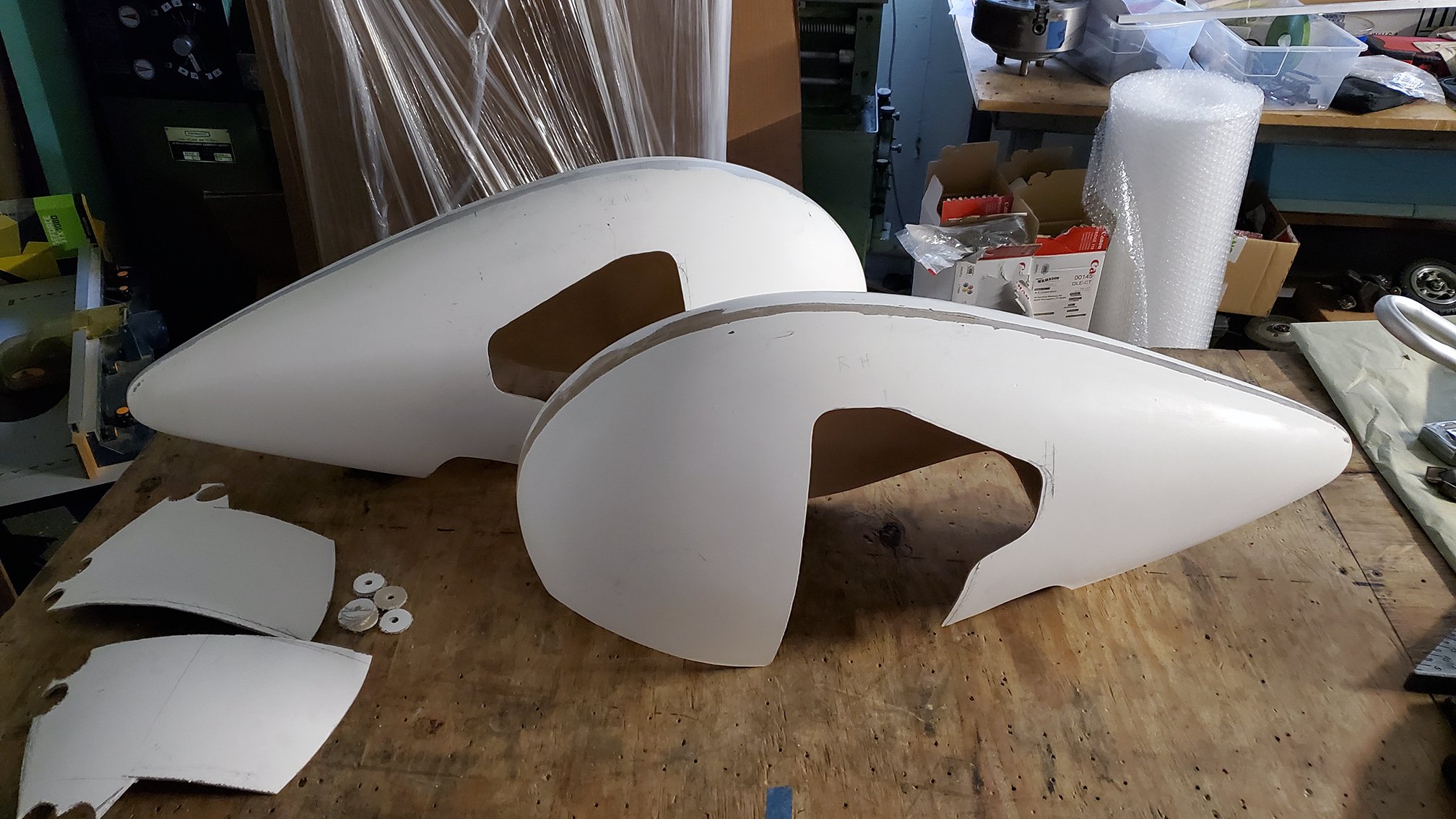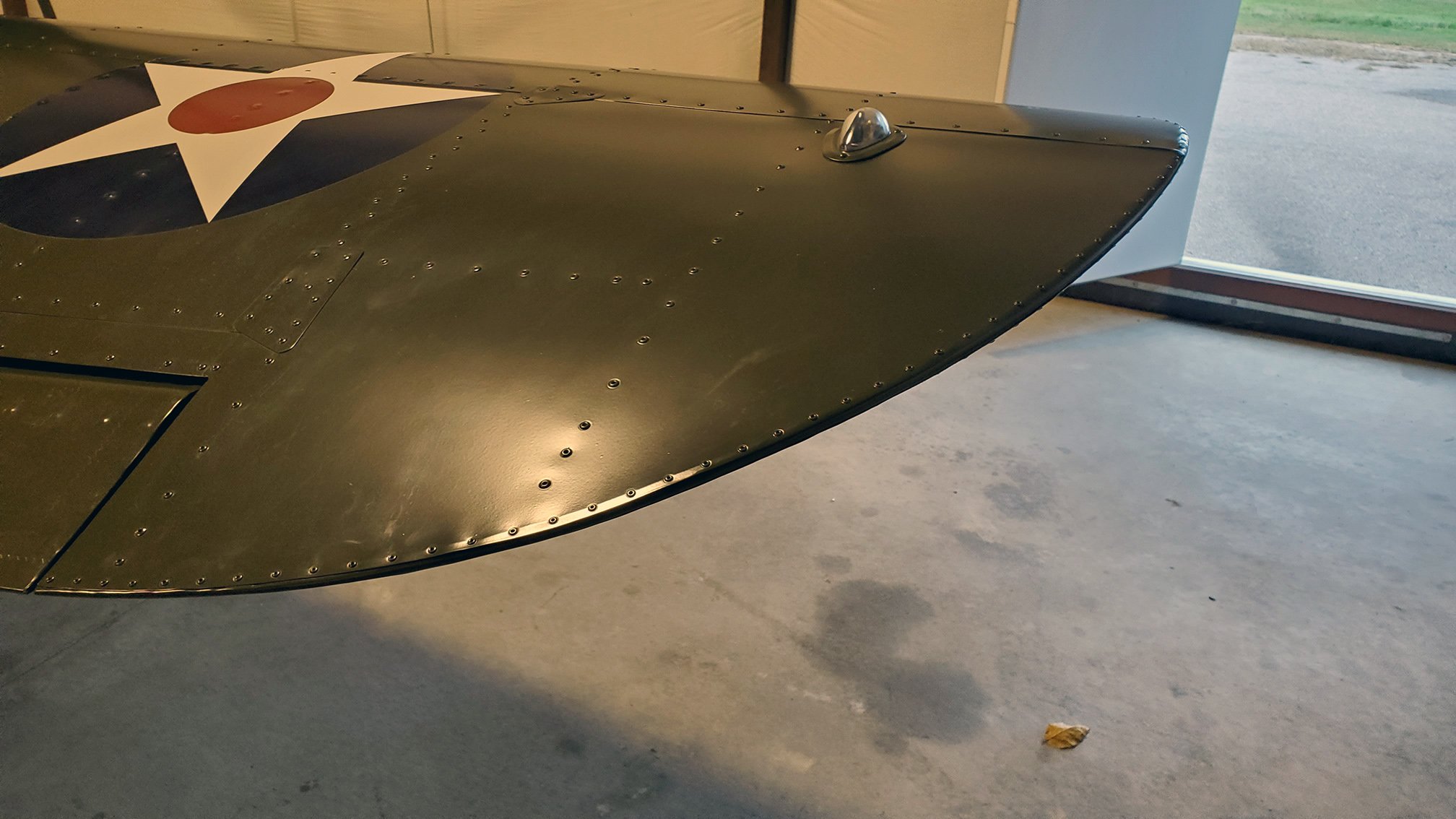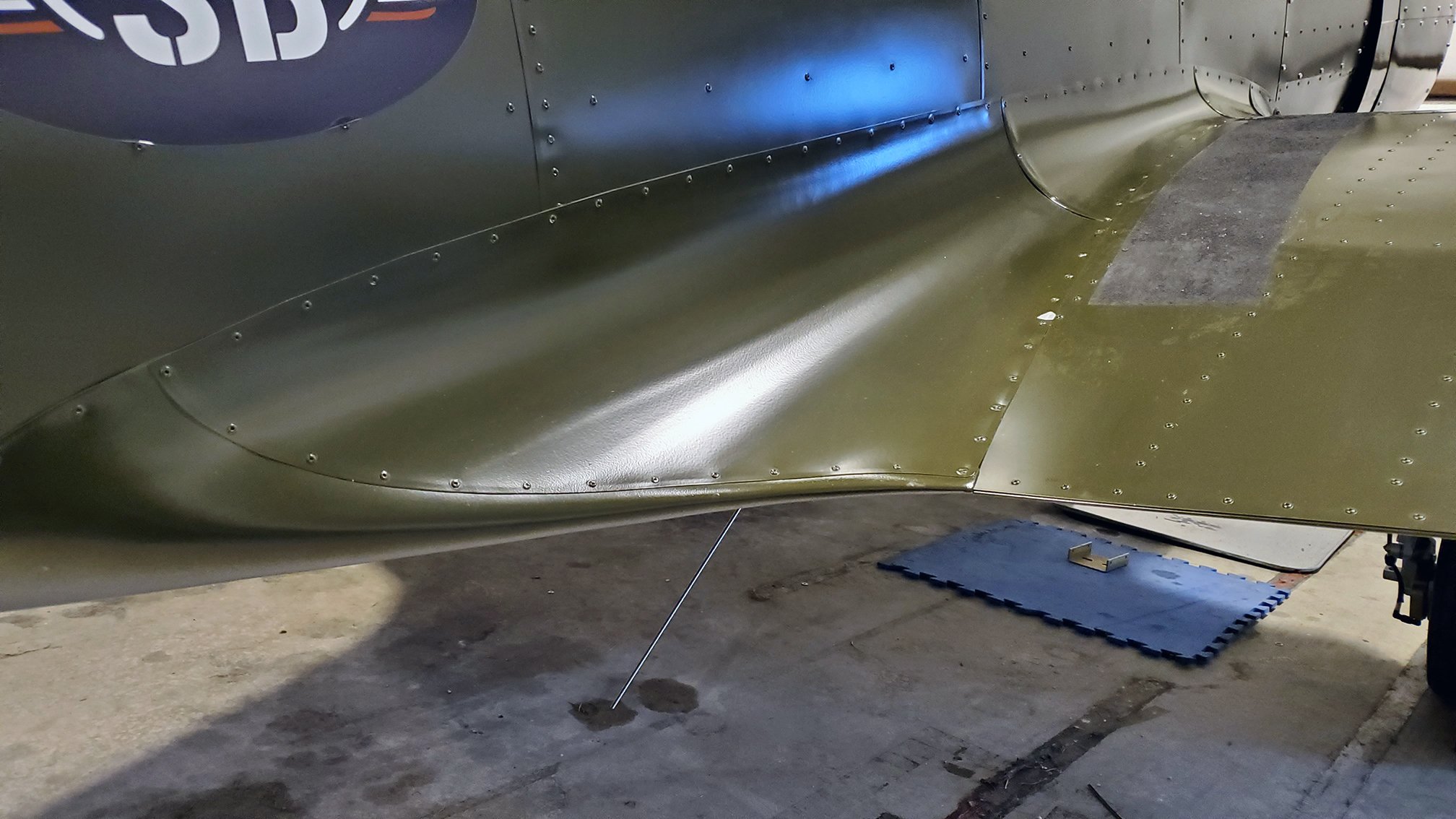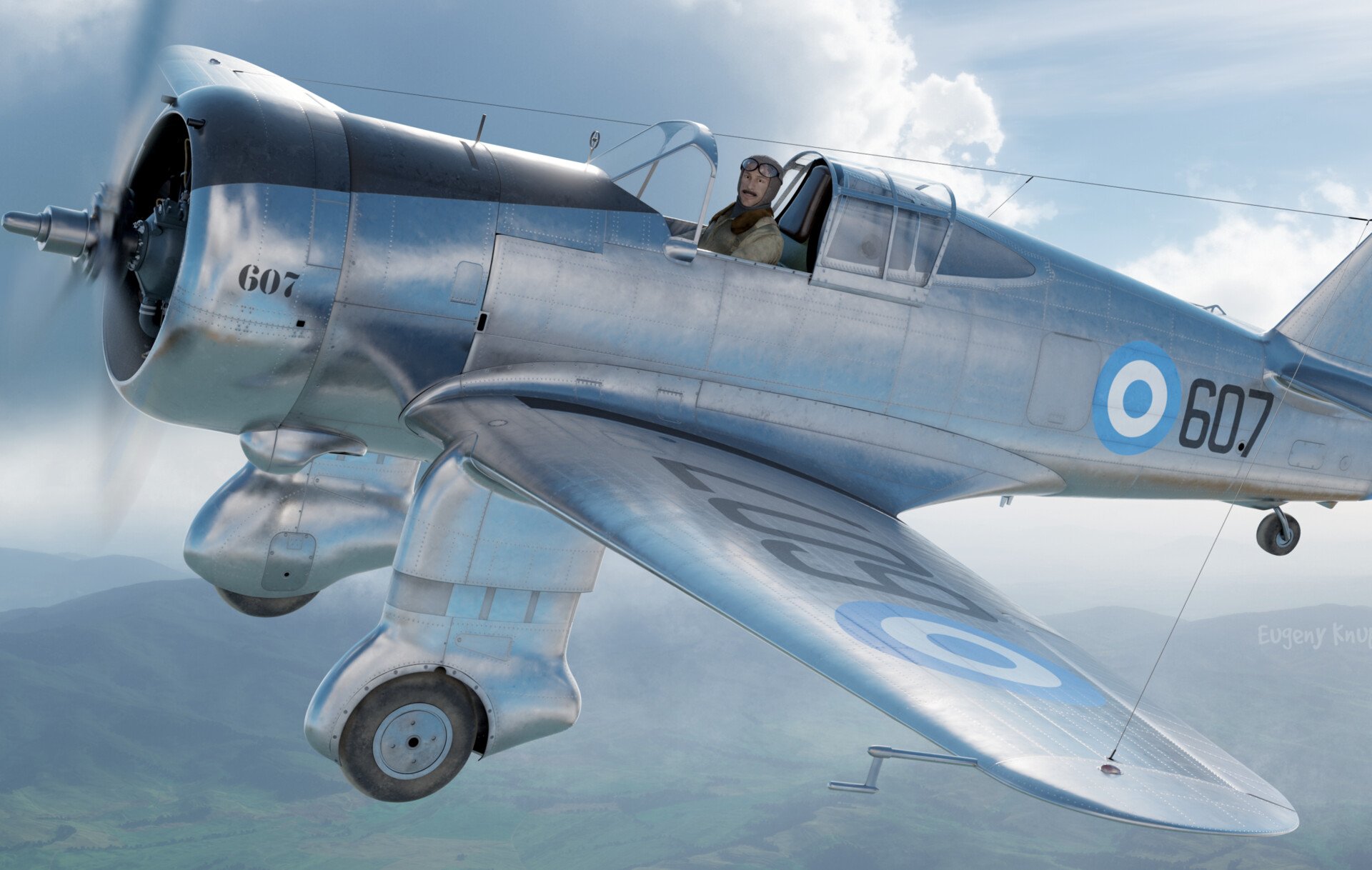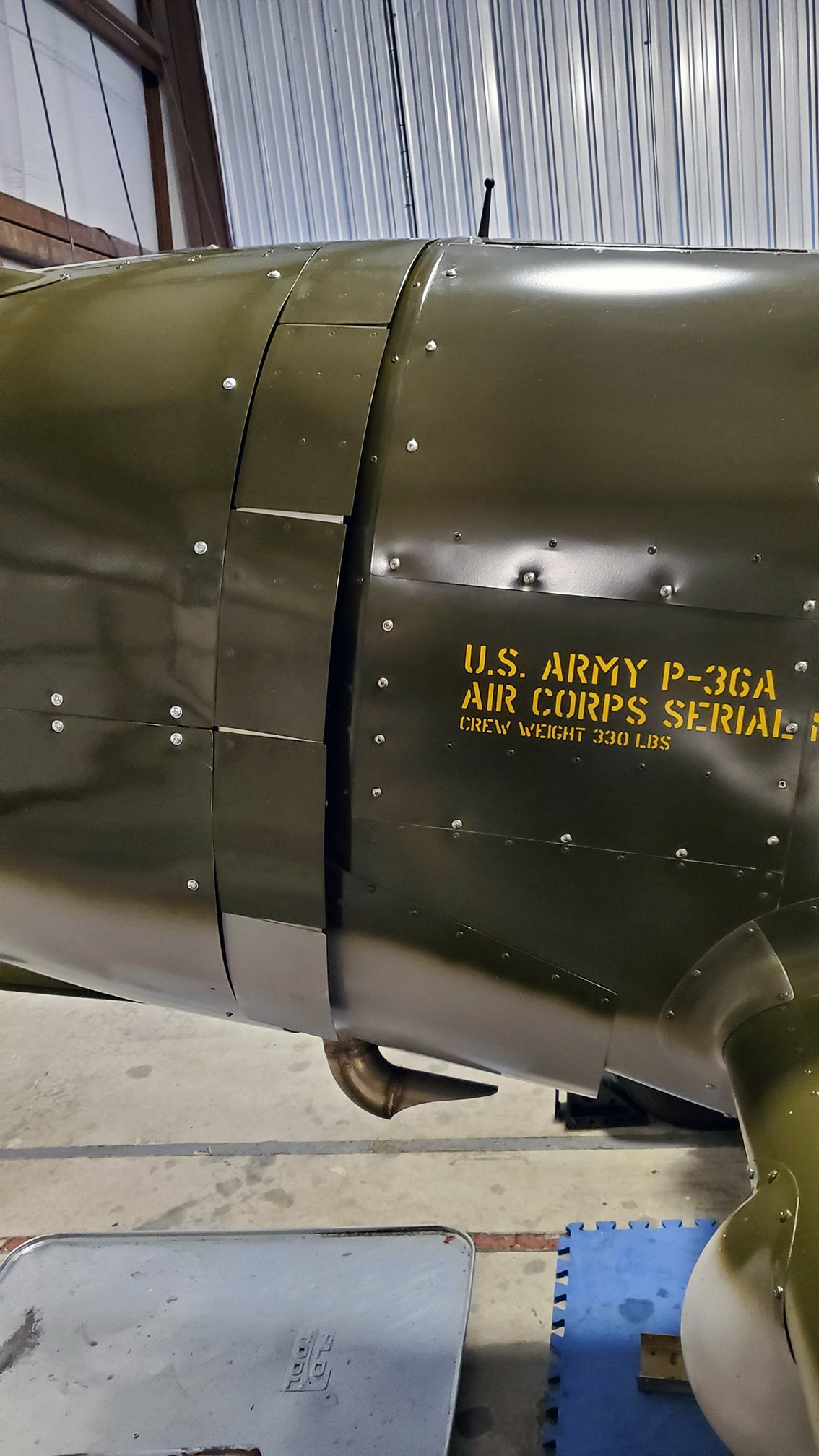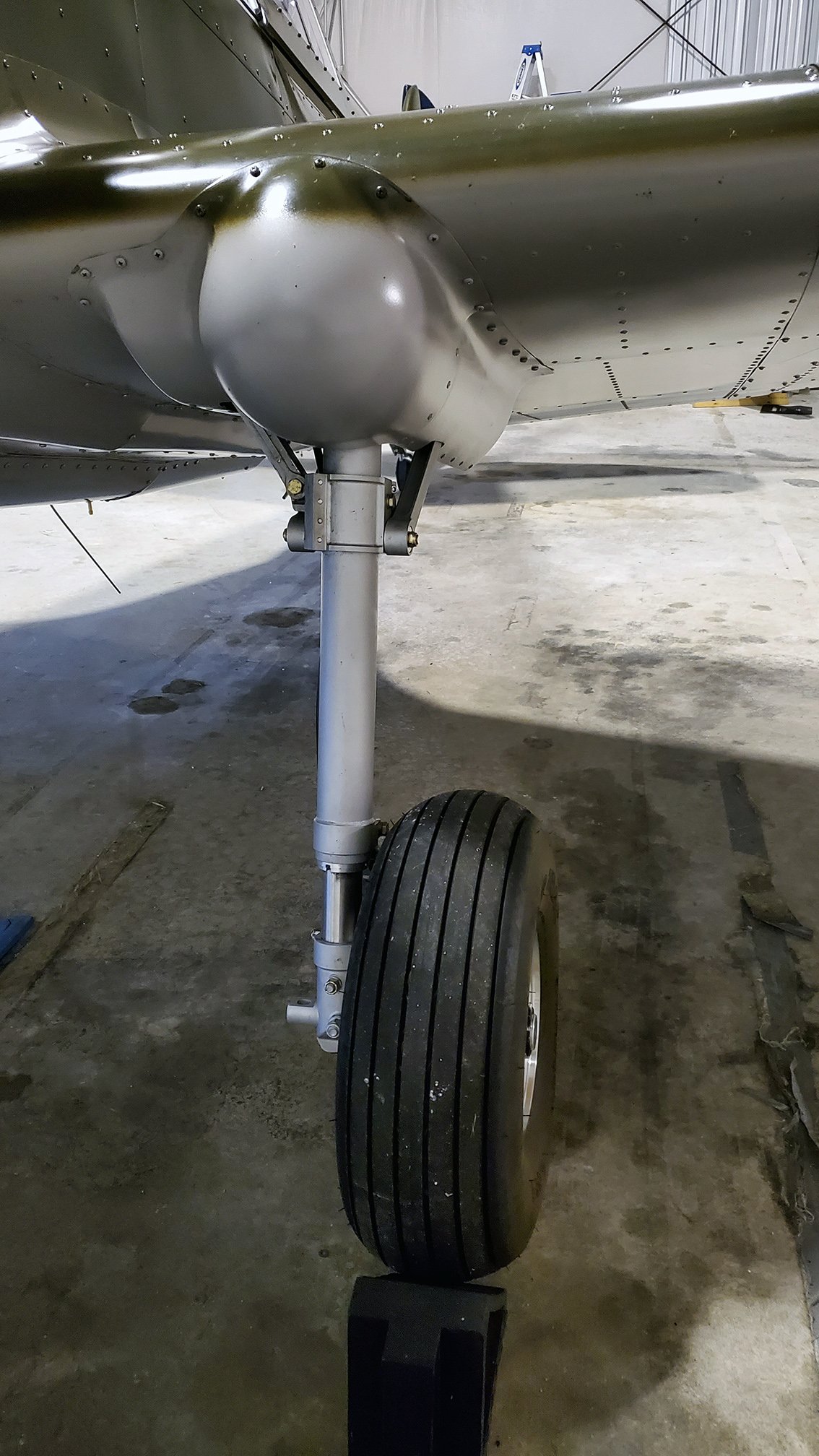Going to School
Been way too long since our last update. We have been flying the Hawk and making adjustments. We are trying to find out what is causing all the drag we are seeing. She is not quite getting up on step for cruise without using a lot of power - which is keeping the temps up to the limit on the engine. If we can reduce the drag and lower the power we can see how she really flies and handles. She is designed to fly at a much higher cruise speed. If we can get her there, then we can determine our control surface sizing and forces, see if the angle of incidence is correct, look for flutter and dive speed, etc… Right now we are just flying large patterns around the airport. The oil tank mods are working perfectly. Not a drop of oil out the breather. The inter-cylinder baffles are helping a lot - we are likely going to try to add a little more baffling around the cylinder heads to help them cool better. She still gets hot, but much easier to manage.
Our main issue now is that she is way slower than expected from the drag calculations. We have several drag producing features to work on. First is the landing gear - they are fixed down. We did that to get flying as fast as possible. The retracts are a big project all their own. The current fixed gear have 600x6 wheels and tires with a thick vertical gear leg. The leg is very similar to the retractable version we have designed. Looking at old NACA wind-tunnel studies, we stumbled onto the absolute worst combination. Large tires with a thick vertical strut tight to the wheel. Then, add in the down-link and braces protruding out right next to the fairings that imitate the retractable look - and we have some serious drag penalty going on. Even in the 30’s when it was more of an art than a science, they knew to add fairings to the wheels and gear legs for a fixed gear. Curtiss added spats to the Hawk for fixed-gear export models. We are studying how Curtiss designed them and are fashioning our own gear leg and wheel fairings to see how much drag the landing gear are producing and if we can speed up the plane. We are fitting wheel pants right now. Will see how much the pants do for speed, then add the spats to the legs and see how much more. So Steve Wolf was telling me that the legs are the real culprit. He was Van’s Aircrafts first employee and learned a lot from them. He told me that when they first put landing gear fairings on the RV-4, the wheel pants gave them 2-3 mph, the gear leg fairings gave them 8 to 10. The round cylinder is the most drag producing shape due to the eddy currents it creates - an order of magnitude more drag than a tear-drop shape. Our drag calcs included a factor for the fixed gear - but may have under-appreciated the drag this gear configuration makes. Gotta find out! Retractable gear are the plan - this reinforces that for sure! The fairings we are adding now are for testing purposes only. Some customers have stated that they want fixed gear. We will develop a purpose built fixed gear and fairings that are more historically accurate when we have the airplane we want.
The next drag producing feature is the cowl flaps. I never really appreciated how much drag they can produce. We are going back to school on this drag thing. There is a reason that all the radial cowls had adjustable flaps. I always thought it was for getting the best speed possible on the fast planes. Nope. Round engine cowl flaps are draggy at all speeds. I have been talking with various warbird pilots and they all tell me the same thing: they close up the cowl flaps right before or after take-off or the plane just mushes along. A B-17 doesn’t take-off with the cowl flaps fully open. They are only fully open on the ground. Most of them have a setting that is barely open - “in trail”. So we closed ours up - they are ground adjustable on the prototype. We found that we are 7 to 10 mph faster with them closed. They are still open a little, so some exit air still gets out. The engine got hot a little quicker in the climb, but I could cool it quicker due to the faster airspeed. Just that bit of drag reduction helped to get her about on-step at high cruise rpm. Full throttle and she is behaving nicely. I just cant keep her at WOT. It is giving me a glimmer of hope that combined with the wheel fairings, we will be flying much better! Going to do more testing at different open settings to get the best compromise of drag and cooling. Ahh, flight testing!
Another drag producing feature is the wing itself. Airfoil, wing tips, root fillet, area, washout, incidence, rivet type and aircraft weight all play into the drag being produced. We have to clean-up the first two large drag buckets to understand how much of the excess drag is left to blame on the wing. Paul is thinking that our wing tip design is about as bad as it gets. How big are the wing tip vortices? The curving tip is terrible for allowing the high pressure air beneath the wing to swirl up and around the tip shape. Basically forcing it into a vortex. We are trying to do a replica, so I’m not too sure how much of that we can change before it isn’t a P-40. We may just have to learn to live with it by adding more required power or at least thinning up the trailing edge for more of the curve. Same with the wing root fillet. We made the trailing edge shape close to the P-36 Hawk’s fillet shape. It isn’t perfect, but pretty close. It starts out very thin out on the wing, but gets a larger and larger radius as it blends into the fuselage. State of the art in the mid 1930’s. On the later P-40, they kept it sharp a lot further along it’s way to the fuselage. We may find that we have to sharpen our fillet to reduce drag. Can do! If you noticed, a P-51 and all the later WW2 aircraft designs don’t have that big fillet. The Spitfire does (it’s a 30’s design), but they keep it sharp all the way. The rounded trailing edge is bad because it allows the air from the wing to mix in eddy currents with and along the fuselage. We will add yarn tufts and see how bad it is. Video coming!
There is of course, many areas on the fuselage and plane as a whole where we can reduce parasite drag. Gun sights, canopy, rivets, skin laps, paint finish, etc… However, we are trying to make a replica fighter from the 30’s. Gonna be draggy if we do it right! So we are going back to school on drag and learning some hard lessons. “They did it that way for a reason”. We will be able to clean her up and keep the look. An inflight adjustable propeller will also help with the performance effort. There are several electric options and we will be studying them for the best fit for this machine.
The good news is the plane flies nicely at higher speeds. The engine cooling is better, the handling is nice and crisp and seems very solid. This really points us to needing retracts with an adjustable prop and cowl flaps. Wing flaps will be a must have feature as well. I have no doubt we can adjust the wing design as needed to compensate for 30’s aerodynamic shaping that made the WarHawk an ICON of WW2. Back to work! Flight Testing!
